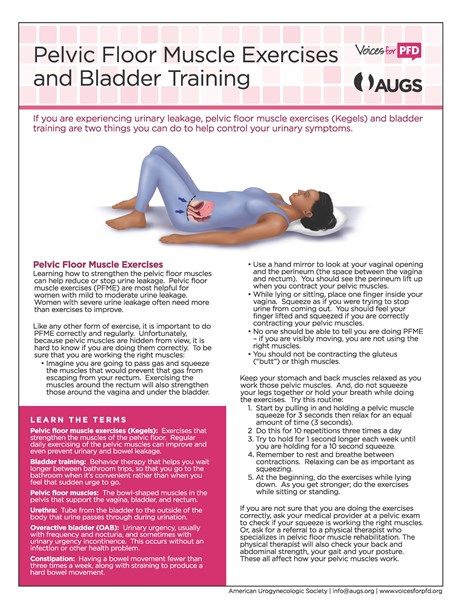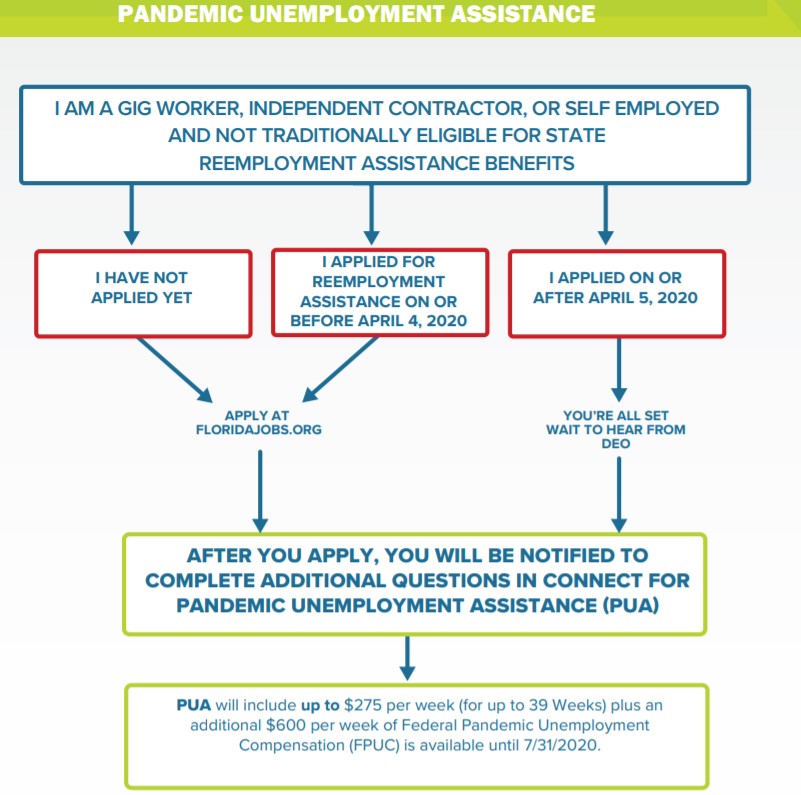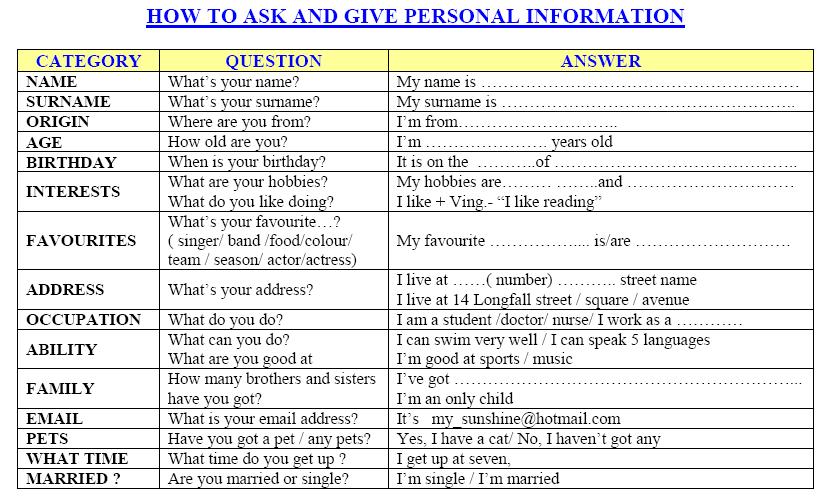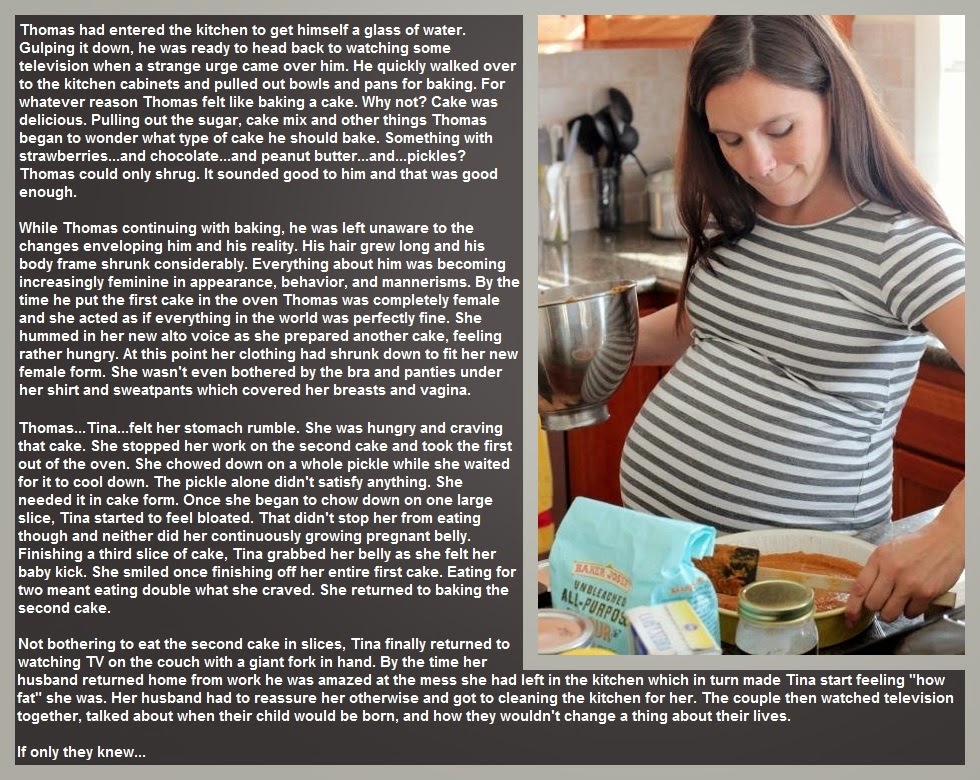Pelvic floor muscle relaxation exercises
How To Relax Your Pelvic Floor
WHAT IS THE PELVIC FLOOR AND WHY SHOULD I RELAX IT?
The pelvic floor is a web of muscles that acts as a sling, supporting your bladder, bowel, and uterus. It is responsible for helping you control your bladder and bowel, and also plays a role in sexual intercourse. Many women experience pelvic floor issues, such as incontinence, as a result of childbirth, obesity, chronic constipation, or other strains put on the pelvic floor. Often, a weakening of the pelvic floor causes these issues, but did you know that having a pelvic floor that is too tense can also create problems? Incontinence, trouble emptying your bladder, and even pain during sex can be signs of a pelvic floor that is too tense.
Luckily, pelvic floor tension is a problem that you can do something about. Below are some simple exercises that may help you to relax your pelvic floor muscles. These can all be done in your home, discreetly, and with no equipment necessary.
Note: It is always recommended to consult a pelvic floor physical therapist prior to performing exercises related to the pelvic floor. A physical therapist can provide you with a proper diagnosis and put you on a custom treatment plan just for you! Find a physical therapist in your area here!
DIAPHRAGMATIC BREATHING FOR PELVIC FLOOR RELAXATION:
The diaphragm works in synergy with the pelvic floor and helps to promote muscle relaxation. This is important for decreasing pain and promoting optimal muscle function.
- Place one hand on your chest and another hand on your belly, just below your rib cage.
- Take a deep breath in to the count of three, and then exhale to the count of four.
- When you inhale, your pelvic floor relaxes, and as you exhale, your pelvic floor returns to its resting state.
- Practice this breathing for 5-10 minutes each day.
Note: You’ll know that you are using your diaphragm correctly if you feel the hand on your belly rise and fall.
NEED SOME EXTRA GUIDANCE? SIGN UP FOR OUR FREE 6-WEEK GUIDE TO BETTER PELVIC FLOOR HEALTH!
PELVIC GIRDLE STRETCHES FOR PELVIC FLOOR RELAXATION
All of the following positions are great for practicing diaphragmatic breathing!
HAPPY BABY POSE:
- Lie on your back.

- Open your knees wider than your chest and bring them up towards your armpits. You may hold your legs with your arms behind your knees or at your ankles, but try to keep your ankles over your knees.
- You can either hold this position or gently rock on your back from side to side
CHILD’S POSE:
- Start on your hands and knees.
- Spread your knees wide apart while keeping your big toes touching.
- Gently bow forward, moving your torso downwards, between your thighs. Keep your arms stretched out long and in front of you.
ADDUCTOR STRETCHING:
- Lie on your back with the soles of your feet together and knees out to the sides.
- This should be a relaxing position. If you feel a pulling along your inner thighs or in your pubic bones, place pillows under your knees for support.
PIRIFORMIS STRETCHING:
- Lie on your back with your knees bent.
- Place your left ankle on your right knee, like a figure four.
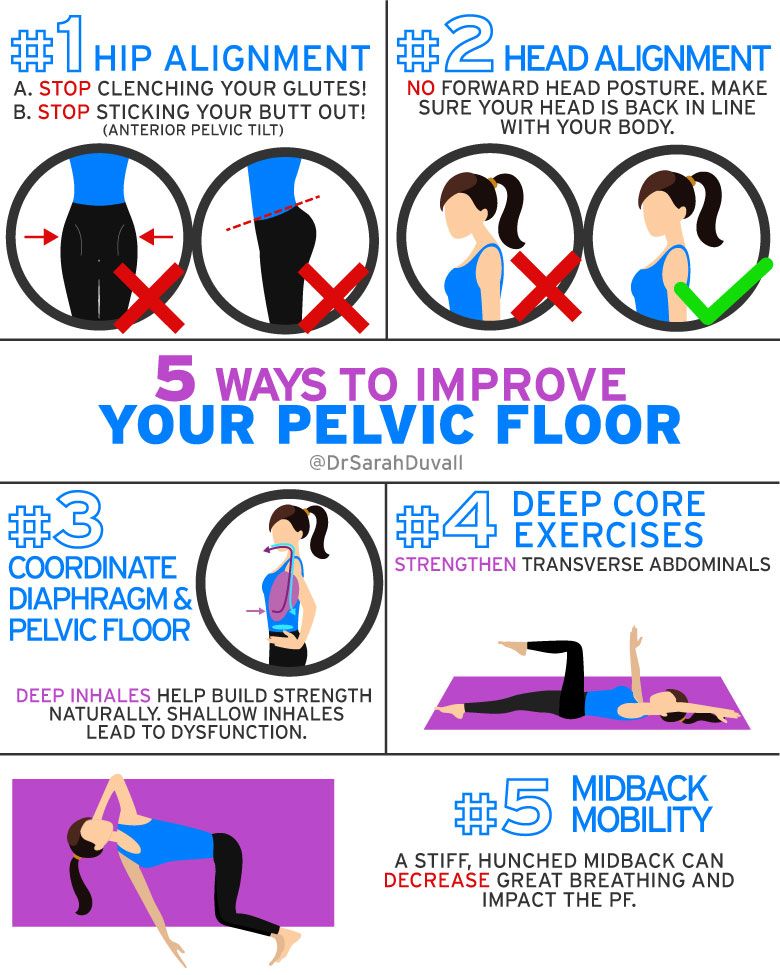
- Pull your right thigh toward your chest to feel a stretch on the outside of your left hip.
- Hold for 30 seconds, and then repeat on the other side.
SIGN UP FOR OUR FREE 6-WEEK GUIDE TO BETTER PELVIC FLOOR HEALTH!
Our six-week guided program provides men and women with actionable steps to help strengthen and relax their pelvic floor. Receive weekly tips, progressive exercise suggestions, and more with this helpful guide! Click the button below to sign up!
SIGN UP FOR THE 6 WEEK GUIDE TO BETTER PELVIC FLOOR HEALTH!
5 Ways to Relax Your Pelvic Floor!
By PHRC Admin
Do you ever wonder why it is important to relax your pelvic floor? Even if you know you should, do you find yourself wondering how to do so?
As a pelvic floor physical therapist, I often have patients who wonder what the value is in being able to relax the pelvic floor. In a culture that places most value on exercises that strengthen, it is important to understand why and how relaxation is just as important.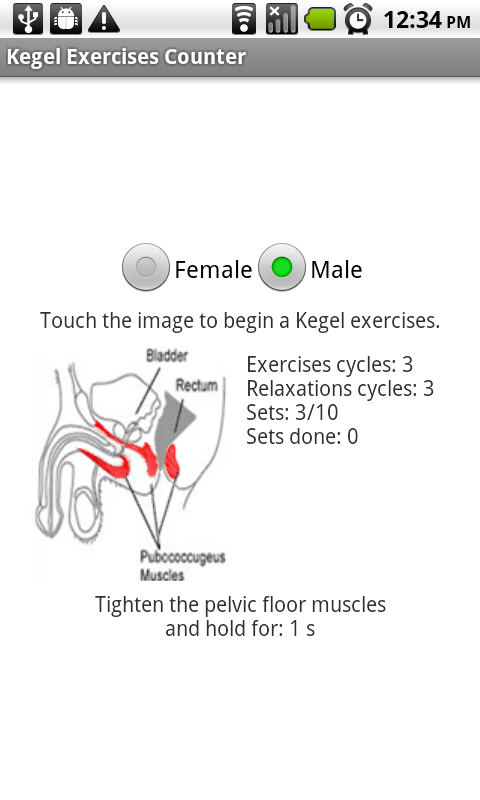
If you are someone who is just interested in building strength, I will speak to that first. In order to have muscles that can generate a good amount of power, it is also important that those muscles have what is called a good “length-tension” relationship. This term means that when muscles sit in too short of a resting state, they are not able to produce effective power. In other words, a tight muscle is not a strong muscle. If your pelvic floor is tight throughout the day and you never allow it to relax, you will not be able to build strength.
If you are someone who is in pain, relaxation is key to your recovery. When muscles are tight and shortened, it decreases the ability for blood and oxygen to get to those areas. This makes both the muscles and nerves in that area unhappy and painful. Another aspect of the body that is affected with tight muscles is the fascia. You can read more about fascia and its role in pelvic pain here. When fascia is tight, it also decreases blood flow and oxygen, contributing to pain.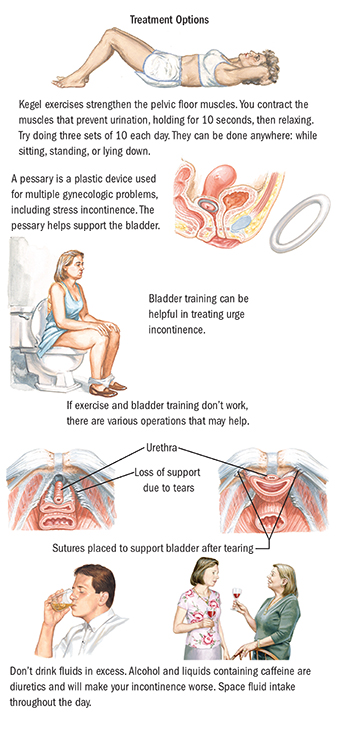 In order to help your pelvic floor muscles be happy and healthy, you need to be able to relax and release.
In order to help your pelvic floor muscles be happy and healthy, you need to be able to relax and release.
Now that I have hopefully convinced you that relaxing your pelvic floor is important, the big question is how! Here are five ways you can get started on your journey to relaxation:
- Diaphragmatic Breathing
The importance of breathing and its relationship to the pelvic floor cannot be stated enough. Unlike other muscles in the body, the pelvic floor muscles are directly influenced and impacted by how we breathe. You breathe approximately 20,000 times a day, so it’s a good investment to make sure you are doing it right!
With diaphragmatic breathing, the goal is to expand the diaphragm by breathing into the rib cage and belly. Try walking through these steps:
- Lay on your back with your knees bent so your low back can rest in a neutral position.
- Place your hands on your rib cage and try to expand the ribs into your hands as you breathe in through your nose.
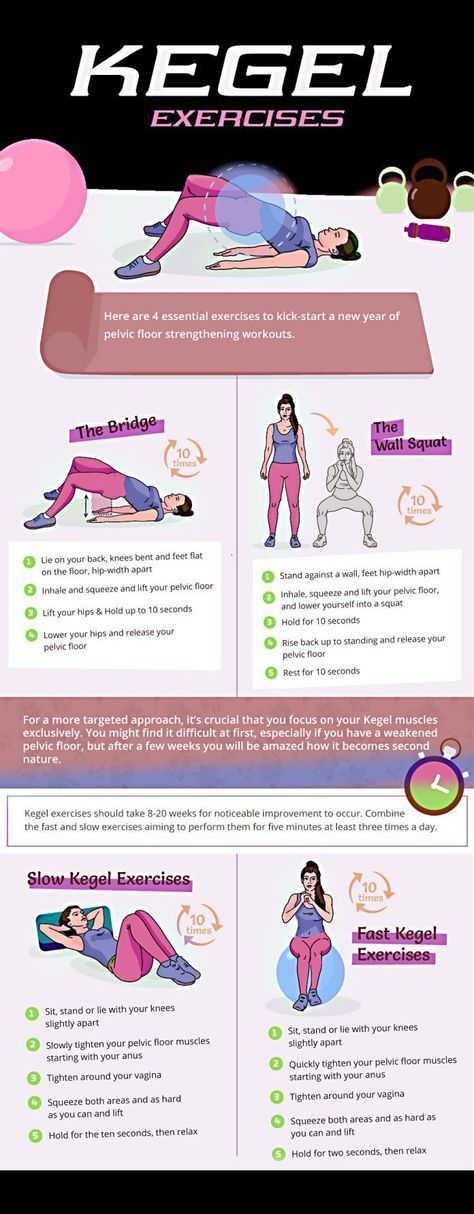
- Breathe out through your nose slowly, making the exhale longer than in the inhale while letting the rib cage and belly softly fall. Repeat 10 times.
This breath is powerful for two reasons. The first is that your diaphragm and pelvic floor like to copy each other. If you are able to successfully expand and drop the diaphragm as you inhale, your pelvic floor will also expand and drop. You may not feel much during this exercise, but if you can visualize the muscles expanding without feelings of tightening or contracting, you are at a good place.
The second reason this breath is powerful is because it helps to regulate your nervous system. You can learn more about the importance of this with muscle pain and tightness here.
- Child’s Pose
Many yoga-inspired poses can help with relaxation of the pelvic floor. One great pose for this is child’s pose:
- Start on hands and knees and bring your feet together while widening your knees.

- Slowly send your hips down to your heels- if they do not touch, place a bolster or pillows underneath to support your hips.
- Walk your arms out long and lower your head onto the floor- place a pillow under your head if you do not make contact with the floor.
- Breathe into the back of your ribcage (diaphragmatic breathing) and imagine your sitz bones (boney ends of the pelvis) separating gently on every inhale.
- Hold for a minimum of 30 seconds while continuously performing diaphragmatic breathing. Repeat 1-2x a day.
During child’s pose, you have a great opportunity to play with visualization of the pelvic floor. As you imagine the sitz bones separating on every inhale, you may begin to develop a sensation of the anus bulging or expanding. This can be a signal that your pelvic floor muscles are relaxing. If you do not feel this right away, try not to get frustrated. Just like any other exercise, this work takes practice and patience.
- Happy Baby
Another great pose for stretching and releasing the pelvic floor, happy baby can feel nice if child’s pose does not feel accessible to you at this time.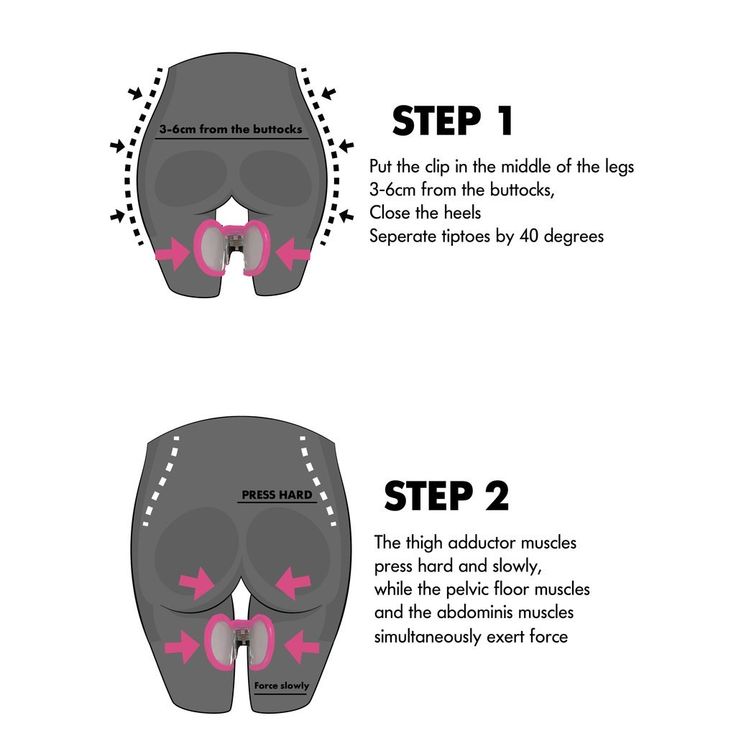
- Start on your back and draw your knees into your chest.
- Reach along the inner thighs with your arms to grab each ankle or inner arch of your foot, whichever is accessible for your body.
- Open your feet to the sky while continuing to bend your knees and drive them into your armpits.
- Breath into your rib cage and belly while imagining the pelvic floor expanding and releasing.
- Hold for at least 30 seconds. Repeat 1-2x a day.
If happy baby does not feel relaxing, play with propping yourself to provide support. This could mean putting a bolster underneath your hips, or even placing your feet on a wall or couch/chair so you do not have to feel like you are straining to keep your legs up. As with any exercise, if this does not feel good on your body, do not force yourself to stay in this pose.
- Yogi Squat
If you would like a pose that you can just drop into in the middle of the day without having to fully get on the ground, yogi squat may be for you.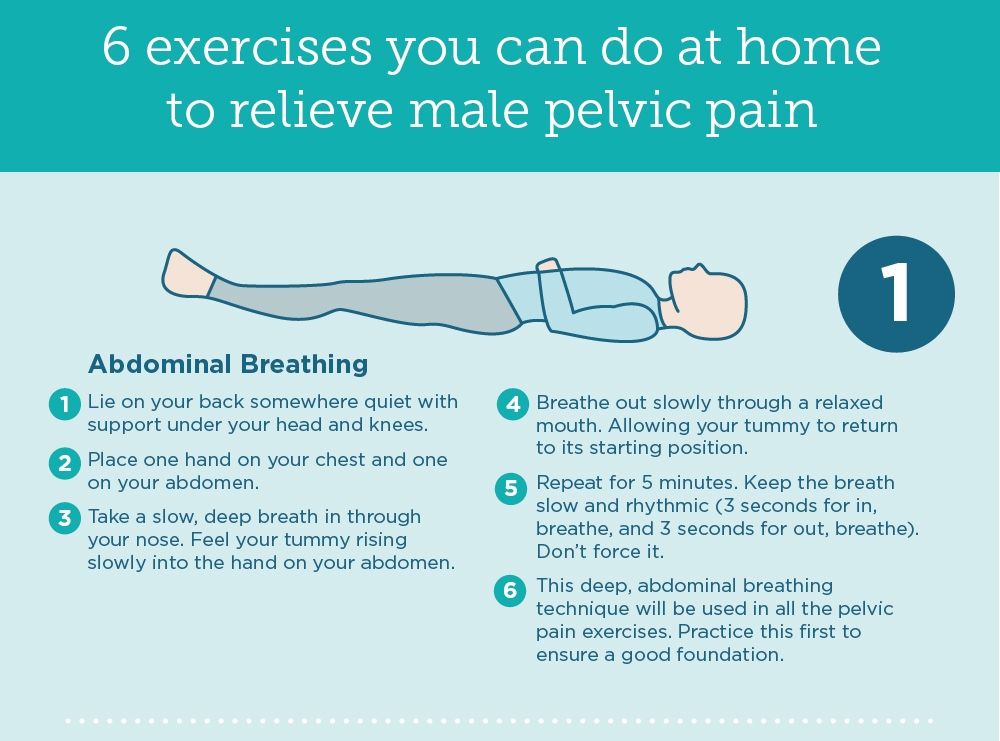 This pose requires more hip, knee, and ankle mobility so it is not appropriate for everyone. If you have discomfort, please modify or try the other poses in this list.
This pose requires more hip, knee, and ankle mobility so it is not appropriate for everyone. If you have discomfort, please modify or try the other poses in this list.
- Start standing with your feet a little wider than hip distance apart and the feet turned out about 45 degrees.
- Slowly bend your knees until you can sit all the way down while keeping your heels down. If your heels cannot stay down, try placing a pillow or half-cut foam roller underneath your heels for support.
- Once you are down, bring your hands together at your chest and use your elbows to gently push the thighs wide, feeling a stretch at the inner thighs.
- Breath into your rib cage and belly, and visualize the pelvic floor dropping and expanding with every inhale.
- You may do this against a wall to support your back, or even sit on a bolster or yoga block to let your body release into the pose without tensing.
- Hold for at least 30 seconds. Repeat 1-2x a day.
Yogi squat is excellent for overall mobility of the lower extremity joints as well as the back and the pelvic floor.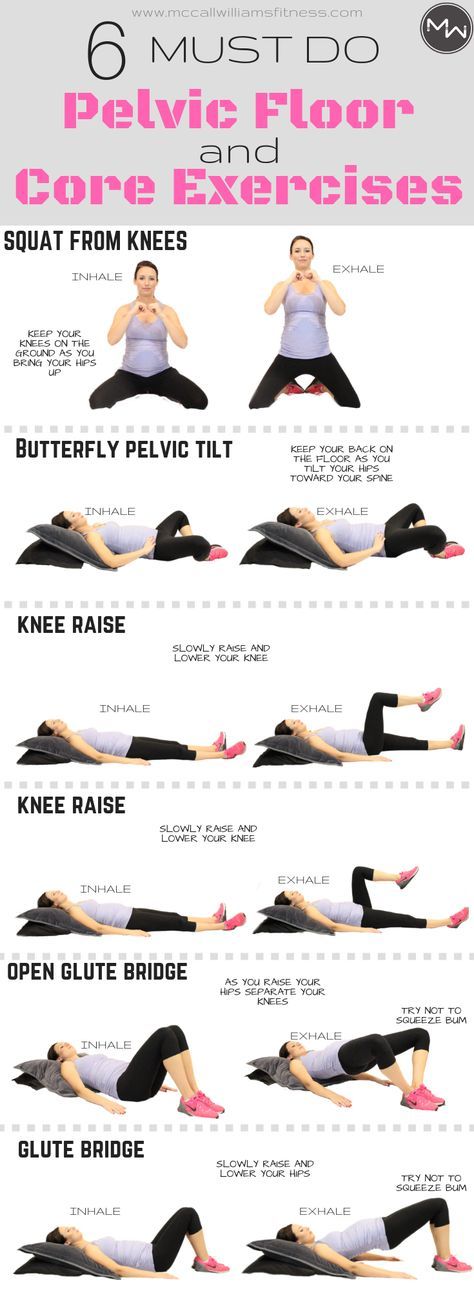 If this pose is available to you, dropping into it a few times through the work day can help keep tightness from building up throughout the day.
If this pose is available to you, dropping into it a few times through the work day can help keep tightness from building up throughout the day.
- Sphinx Pose
One area that is important to release when dealing with pelvic floor tightness is the abdominals. The abdomen is directly linked with the pelvic floor and often when one area is tight it influences the other. Trying a gentle abdomen stretch with spinal extension, such as sphinx pose, can be beneficial in finding full release.
- Lay on your stomach with your elbows bent right underneath your shoulders.
- Feel a gentle lift in the chest with the collarbone wide while keeping your hips grounded to the earth.
- Feel the soft stretch at the abdomen and notice if you are gripping your butt muscles.
- If there is any tension, wiggle your hips or your torso to shake it off.
- Return to your diaphragmatic breathing and notice any sensations of dropping or release the pelvic floor.

- Hold for at least 30 seconds and repeat 1-2x a day.
Pay attention to how your spine feels in the posture. Some people may not tolerate extension at the spine in which case the recommendation is to skip this pose. If you feel your gluteal muscles tightening and you are unable to get them to relax, just try squeezing and releasing those muscles for a few rounds before connecting it to the pelvic floor.
As with any generalized exercise program, some of these exercises may not be appropriate for every individual. We all have unique bodies with their own stories. It is important you listen to your body’s boundaries and respect limitations rather than try to push through them. This is deep, mindful work that requires truly connecting and engaging with your body’s intuition of what feels right.
If you are a visual and kinesthetic learner, I have also created a video that goes over each of the exercises so you can follow along! If you are still interested in learning more about what is right for your individual body and want more feedback, please consider booking a virtual appointment with me. I am now offering one-on-one movement sessions to help you create a movement program that is right for you. These sessions can also serve as a guide to help you return to movement classes you might be interested in, such as yoga or pilates.
I am now offering one-on-one movement sessions to help you create a movement program that is right for you. These sessions can also serve as a guide to help you return to movement classes you might be interested in, such as yoga or pilates.
Lastly, if you are still unsure what you are doing is correct or are not experiencing any form of relief, please consider booking an appointment with one of our therapists at these locations. Nothing can replace the physical exam a professional pelvic floor therapist can perform to provide more answers and solutions for your pain. You are not alone and we are here to help.
______________________________________________________________________________________________________________________________________
Are you unable to come see us in person? We offer virtual physical therapy appointments too!
Due to COVID-19, we understand people may prefer to utilize our services from their homes. We also understand that many people do not have access to pelvic floor physical therapy and we are here to help! The Pelvic Health and Rehabilitation Center is a multi-city company of highly trained and specialized pelvic floor physical therapists committed to helping people optimize their pelvic health and eliminate pelvic pain and dysfunction. We are here for you and ready to help, whether it is in-person or online.
We also understand that many people do not have access to pelvic floor physical therapy and we are here to help! The Pelvic Health and Rehabilitation Center is a multi-city company of highly trained and specialized pelvic floor physical therapists committed to helping people optimize their pelvic health and eliminate pelvic pain and dysfunction. We are here for you and ready to help, whether it is in-person or online.
Virtual sessions are available with PHRC pelvic floor physical therapists via our video platform, Zoom, or via phone. For more information and to schedule, please visit our digital healthcare page.
In addition to virtual consultation with our physical therapists, we also offer integrative health services with Jandra Mueller, DPT, MS. Jandra is a pelvic floor physical therapist who also has her Master’s degree in Integrative Health and Nutrition. She offers services such as hormone testing via the DUTCH test, comprehensive stool testing for gastrointestinal health concerns, and integrative health coaching and meal planning.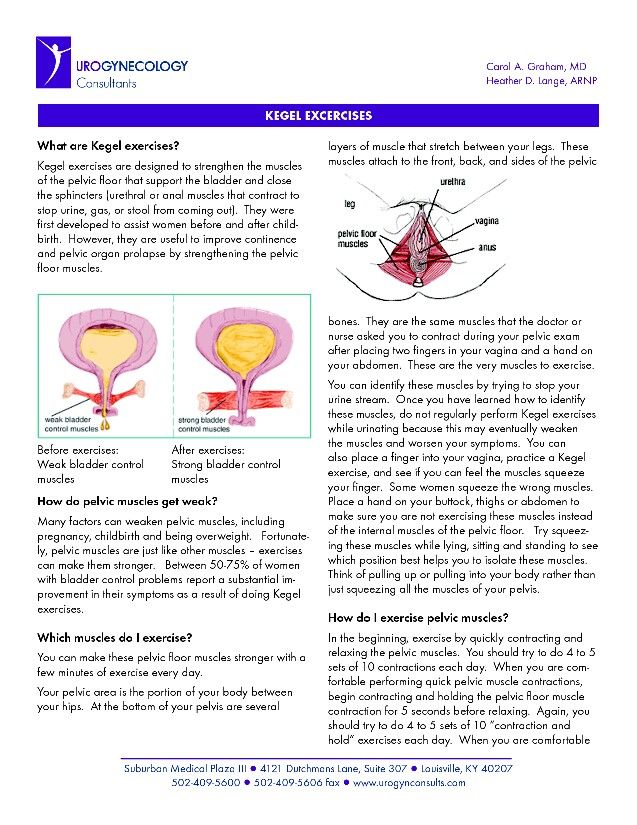 For more information about her services and to schedule, please visit our Integrative Health website page.
For more information about her services and to schedule, please visit our Integrative Health website page.
PHRC is also offering individualized movement sessions, hosted by Karah Charette, DPT. Karah is a pelvic floor physical therapist at the Berkeley and San Francisco locations. She is certified in classical mat and reformer Pilates, as well as a registered 200 hour Ashtanga Vinyasa yoga teacher. There are 30 min and 60 min sessions options where you can: (1) Consult on what type of Pilates or yoga class would be appropriate to participate in (2) Review ways to modify poses to fit your individual needs and (3) Create a synthesis of your home exercise program into a movement flow. To schedule a 1-on-1 appointment call us at (510) 922-9836
Do you enjoy or blog and want more content from PHRC? Please head over to social media!
Like us on Facebook,
Subscribe to our YouTube Channel,
and follow us on Twitter, Instagram and Pinterest!
Pelvic floor exercises (Kegel exercises) for men
Share Time to read: Approximately 2 min.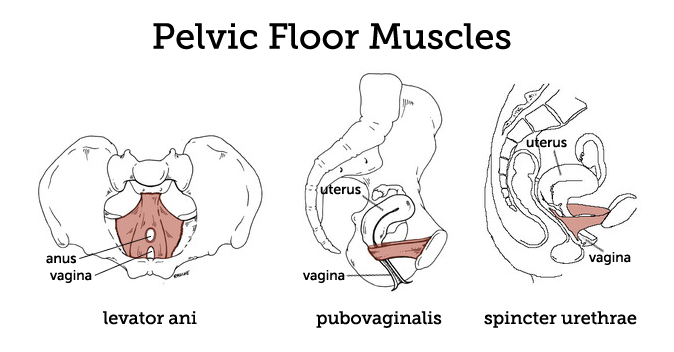
This information will help you learn how to do pelvic floor exercises (Kegel exercises).
back to top of pageAbout Kegel Exercises
The main purpose of Kegel exercises is to help you strengthen your pelvic floor muscles. These muscles support your bladder and intestines. nine0011
With Kegel exercises you can:
- Control or prevent urinary incontinence. Incontinence is the leakage of urine and stool (feces) that you cannot control.
- strengthen your sexual health.
About the pelvic floor muscles
The pelvic floor muscles line the pelvic cavity and support the pelvic organs (see figure 1). These are the muscles that relax during urination (when you go to the toilet in a small way) and during passing gases or bowel movements (when you go to the toilet in a big way). You also use these muscles to hold urine and prevent leakage. nine0011
Figure 1 Pelvic floor muscles
Pelvic Floor Muscle Test
Pelvic floor muscles must be checked before performing Kegel exercises.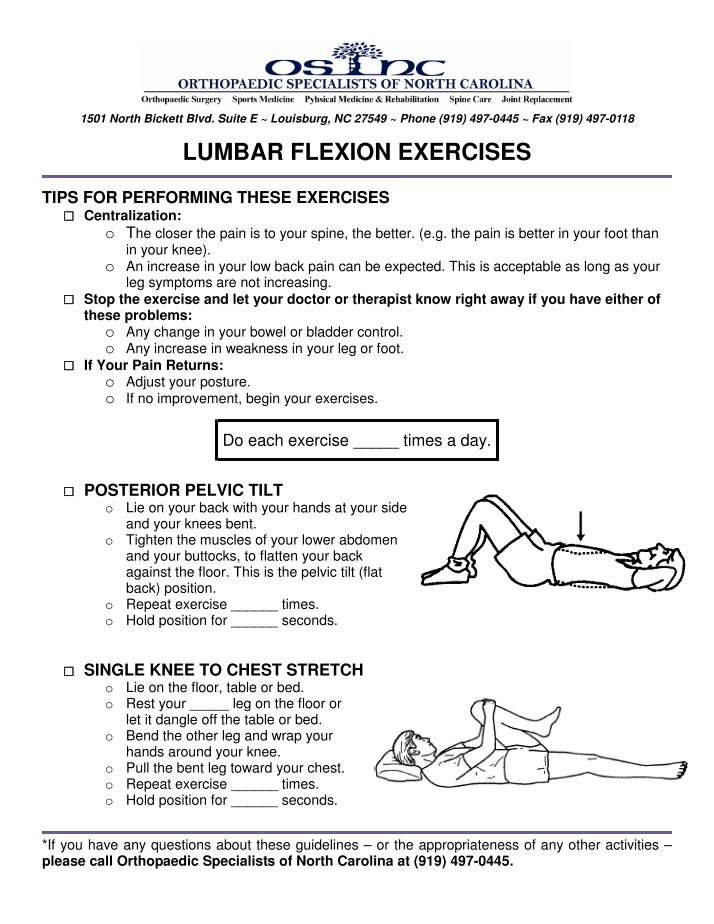 Think about what muscles you use to interrupt the stream of urine when urinating, concentrate on them. Don't do this often, as stopping the flow of urine every time you urinate can be harmful.
Think about what muscles you use to interrupt the stream of urine when urinating, concentrate on them. Don't do this often, as stopping the flow of urine every time you urinate can be harmful.
How to Do Kegel Exercises
Make sure you urinate to keep your bladder empty before doing Kegel exercises. nine0011
When you're ready, start doing the following:
- To begin, pull in your pelvic floor muscles and hold for 5 seconds. To do this, imagine that you are pulling in and lifting the genitals.
- Do not hold your breath. Counting out loud will keep you from holding your breath.
- After 5 seconds, slowly and completely relax the muscles, holding them in this state for 5 seconds.
- Repeat the exercise 10 times and do it at least 3 times daily. nine0004
Your pelvic floor muscles may become tired during this exercise. In this case, stop doing the exercise and start it later.
This exercise does not involve the abdominal muscles, legs or buttocks. Exercising these muscles will not help you regain urinary control or improve your sexual health.
Exercising these muscles will not help you regain urinary control or improve your sexual health.
As you continue with these exercises, gradually increase the amount of time the pelvic floor muscles are contracted and relaxed. Start with 5 seconds and gradually build up the time each week until you reach 10 seconds. nine0011 back to top of page
When to do Kegel exercises
Most people prefer to do Kegel exercises while lying in bed or sitting in a chair. They can be done in any position convenient for you. Doing Kegel exercises while standing can be very helpful, as urine leakage usually occurs in this position.
To prevent leakage of urine, try a Kegel exercise before you:
- stand up;
- walk; nine0004
- go to the toilet;
- to sneeze or cough;
- laugh.
Doing these exercises will help you strengthen your pelvic floor muscles and reduce urine leakage.
Do not do Kegel exercises if you have a Foley catheter (thin, flexible tube) in place.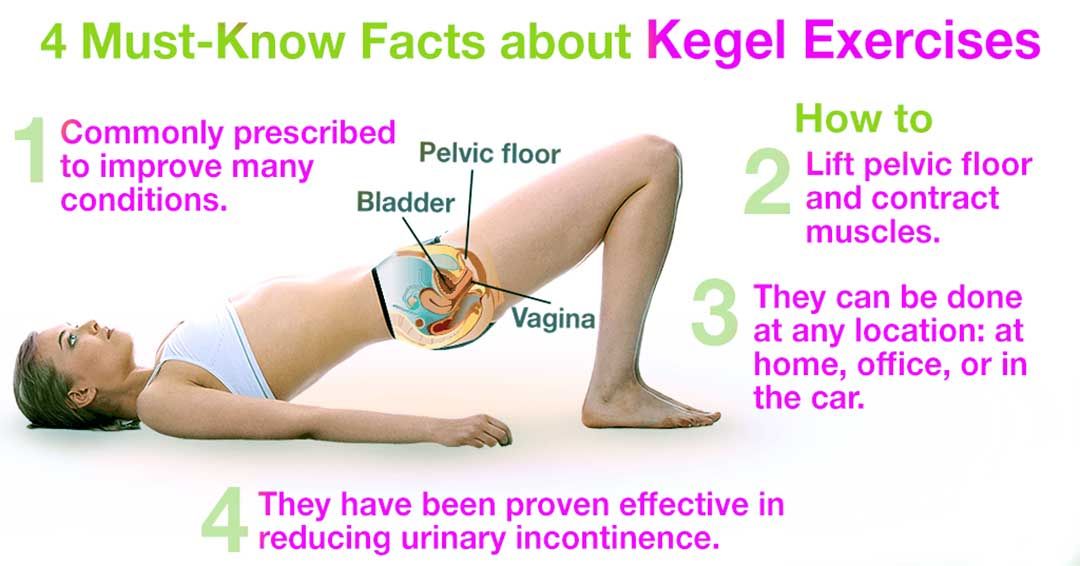
Pain and Kegel exercises
Kegel exercises should not cause pain. Many find them simple and relaxing. But if you use the wrong muscles when doing them, you may experience discomfort. nine0011
- If you experience pain in your back or abdomen after doing Kegel exercises, you may be using your abdominal or back muscles instead of your pelvic floor muscles.
- If you have a headache after doing Kegel exercises, you may be tightening your chest muscles and holding your breath.
When should you contact your healthcare provider?
Call your healthcare provider if:
- concern about bowel, bladder or sexual function;
- difficulty concentrating on pelvic floor muscles;
- pain when doing Kegel exercises;
- difficulty doing Kegel exercises;
- pelvic pain;
- questions requiring referral to a pelvic physiotherapist.
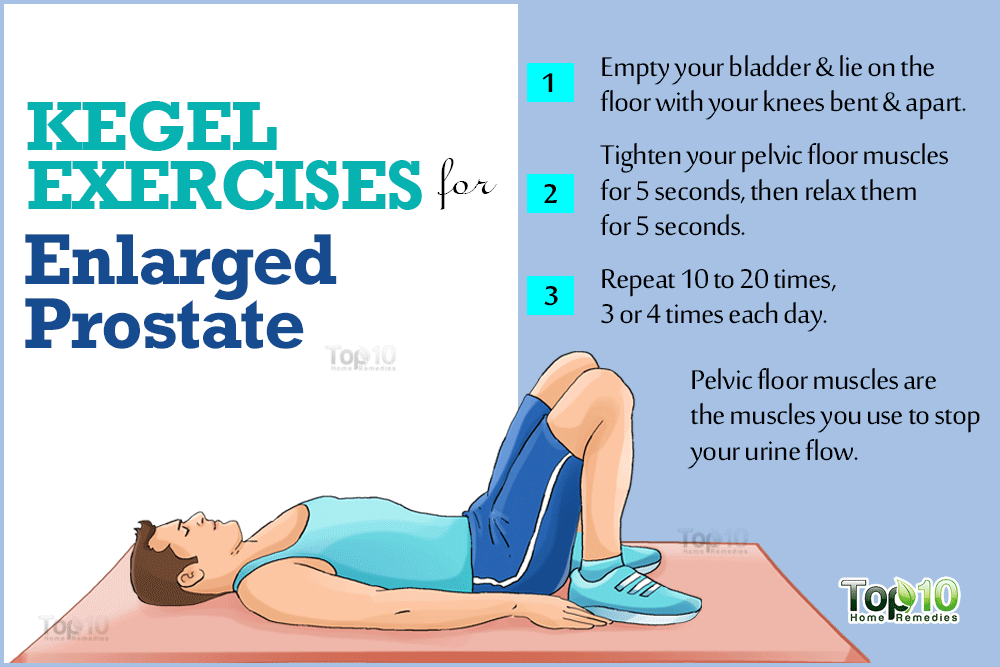
You must have JavaScript enabled to use this form. nine0011
Share your opinion
Give us your feedback
Your feedback will help us improve the information we provide to patients and caregivers.
Questions
| Questions | Yes | To some extent | No |
|---|---|---|---|
| Was this information easy for you to understand? | Yes | To some extent | No |
What should be explained in more detail?
Pelvic Relaxation Exercises - Neptune Wellbeing
After treatment, I often give home exercises. These exercises support the body of the session.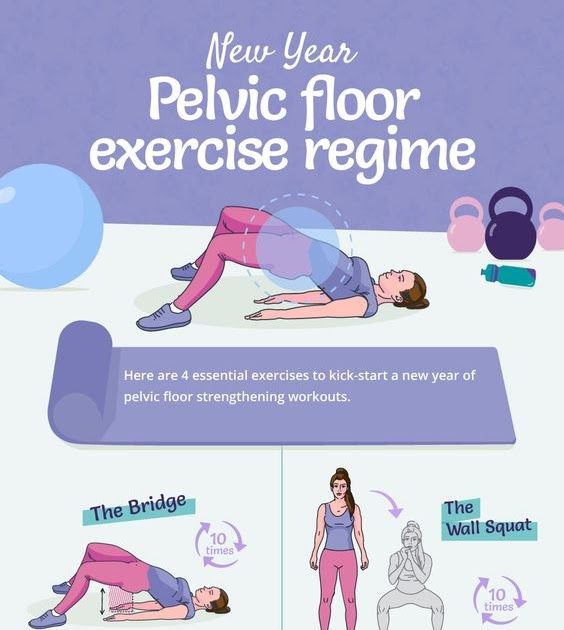 Usually this exercise brings you back to the part of your body that you were working on. This attention makes you aware of overload, tension, or blockages. By breathing, tensing, and consciously relaxing, you regain balance. nine0082
Usually this exercise brings you back to the part of your body that you were working on. This attention makes you aware of overload, tension, or blockages. By breathing, tensing, and consciously relaxing, you regain balance. nine0082
Most treatments have been canceled due to anti-coronavirus measures. Since I treat many people with pelvic floor complaints, I have included a few exercises that you can do at home.
These exercises are for people with an overactive pelvic floor. The pelvis is numb or painful, such as during bowel movements or during sex. In addition to the pelvis itself, there are pelvic floor muscles attached to your skeleton, such as the lower vertebrae and coccyx. Therefore, many people do not realize that it is the tension of the pelvic floor that causes suffering in other places. We feel tension in the lower back or painful irradiation of the legs, but the reason lies in the pelvic muscles that have been contracting for too long, causing muscle acidification and pinched nerves.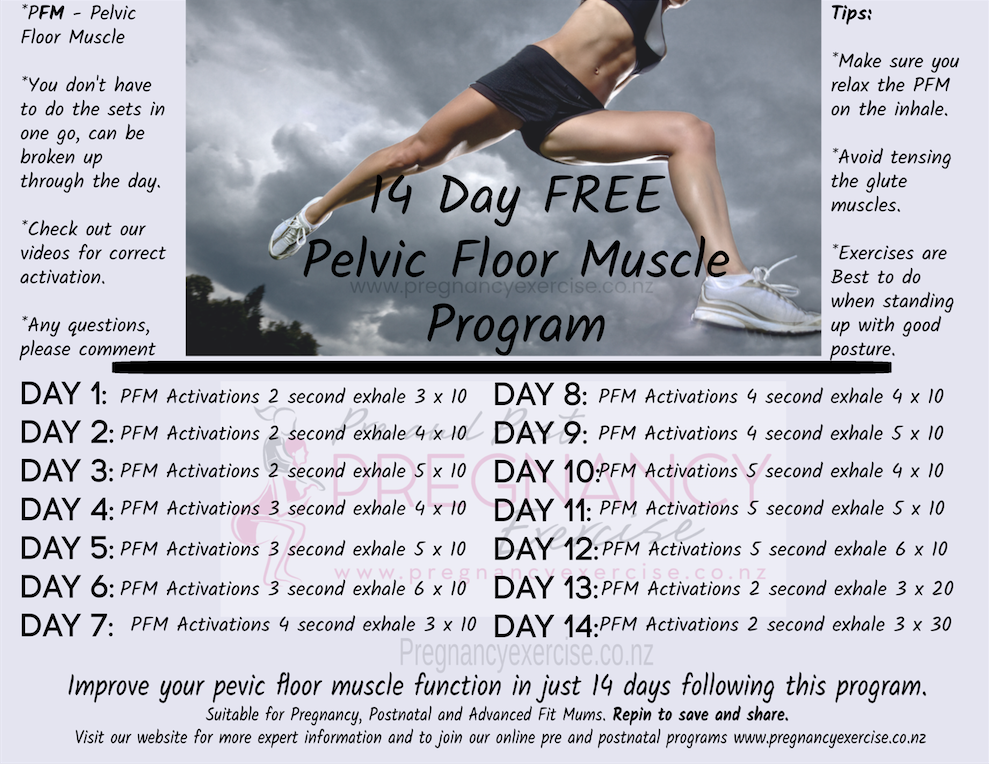 There is a feeling of tiredness and soreness, or the feeling completely disappears, making it difficult to urinate or enjoy sex. nine0011
There is a feeling of tiredness and soreness, or the feeling completely disappears, making it difficult to urinate or enjoy sex. nine0011
Grounding (grounding)
The basic exercise below is a basic exercise that you can start before doing other exercises.
Grounding is also called soil. Grounding helps you relieve stress and tension. By making contact with the earth, you can leave behind all the impressions that have come and guide you inward. Contact with the earth gives you strength and peace. We are back on earth, literally and figuratively. We are less in our thoughts and emotions flow away from us. nine0011
Down Pelvic Swing
This bioenergy exercise relaxes the pelvic area. It draws your attention and your femininity, getting energy to your pelvis, making us feel more. Many of the pelvic floor are stretched too tight or become so relaxed that there is tension in the lower back, or your body cannot carry enough, so that other parts of the body are overloaded.